Friday, it’s so hard to forsake Casa de la Presa that I don’t hit the road until after 11 AM. The first stretch of highway is the same one I drove, in the other direction, in the darkness last night. Of course, it’s much easier in daylight. This morning, I can enjoy the blind turns and insufficient width of the road which shares the canyon bottom with a rushing river, invisible in yesterday’s inkiness.
Just before my backtrack of yesterday’s return home ends, I make a quick stop in El Pont de Suert for croissants to round out my edibles for the day. Two are devoured within the first mile. Now, I’m in new territory, heading further west. The high mountains are rapidly giving way to flatter terrain. Before they do, the highway goes through very deep and narrow Obarra Gorge.
[NOTE: To enlarge any image, right click it and choose “Open image in New Tab” or similar.
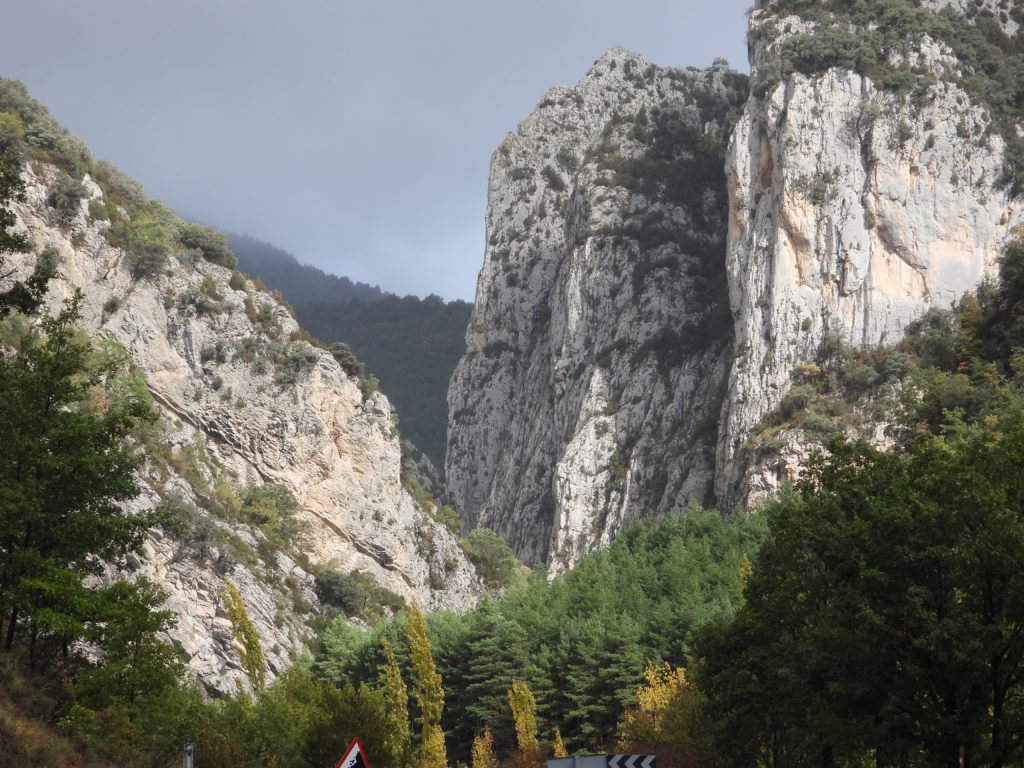
I stop in a parking area at the other end to take a picture. There are many other cars here but their occupants are mostly out of sight. As I walk back a few meters to snap my photo, I see a sign indicating there’s an old monastery 5 minutes away on foot. That must be where everyone has headed. Religious edifices, regardless of age or architecture, hold little interest for me so I continue onward. Another sign, though, describes the Ferrata de Obarra.
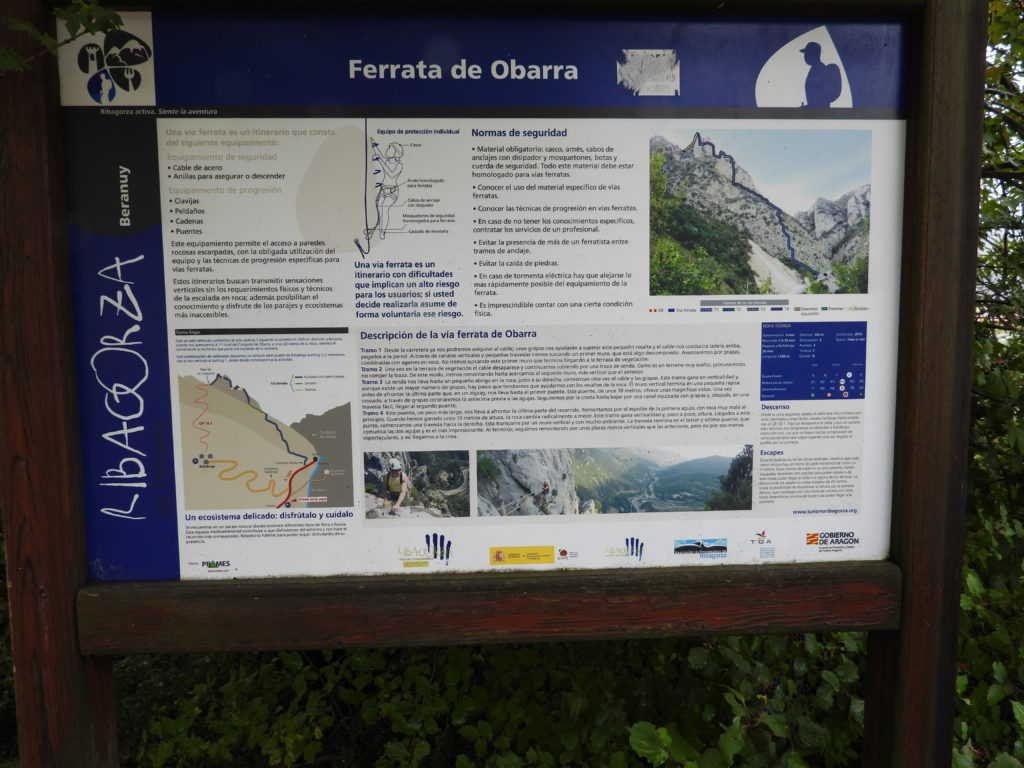
A ferrata is an iron trail, one that can’t simply be hiked but can be traveled without full technical climbing gear and skills. The route involves steel ladder rungs for vertical travel, dual cables or railings for traversing vertical rock faces, and a variety of chains, pegs, and steps – all anchored firmly into rock. It lets non-climbers get some of the thrills in a relatively safe manner. I’ve done a few of these over the years. In fact, around 1993, I took my two young children up the Precipice Trail in Acadia National Park. The three of us, worked our way up an exposed cliff, carefully using safe techniques. It was a fun climb but as we reached the summit of Cadillac Mountain, a number of tourists (who had driven up in their cars) looked as if they were ready to call Child Protective Services on me. Luckily, this was before everyone had a cell phone. That evening, as I told of our excursion to a park ranger he commented “It’s a very nice trail, if you like the feeling that every step might be your last.” Alas, as much as via ferratas intrigue me, I reluctantly accept that I’ve aged out of that risk profile, so all I’m willing to do is read the sign. It might still be safe with a guide and safety gear.
At Jánovas, there’s a view of an unusual massive, ridged rock face across the canyon.
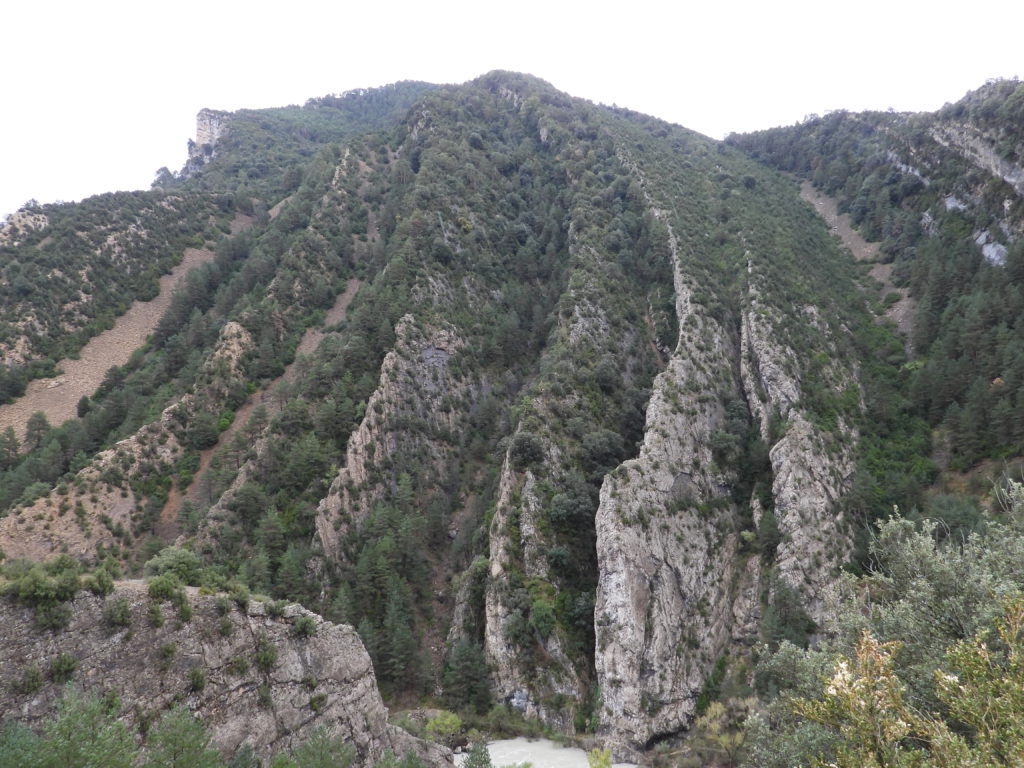
The road is getting flatter and less interesting, although curiously constructed. With plenty of room on both sides of the roadway, it is now two clearly marked, well striped, opposing lanes. For reasons I don’t understand, though, the lanes are only six feet wide instead of the usual eight. This makes them just wide enough to fit a standard car but with the mirrors protruding above the white lines on both sides. Oncoming vehicles still have to hug the right shoulder to be certain of a safe pass. I don’t get it.
I stop for a break, buy a cup of coffee and drink it with my last croissant. A new motorway is being built along my route so I’m traveling on open sections of expressway in between being detoured around segments still under construction. Around 3 PM, with a couple of hours still ahead of me, the diffuse light is making my eyes want to close so I pull off onto an abandoned section of road and take a 20 minute nap. In the distance is the abandoned village of Escó.
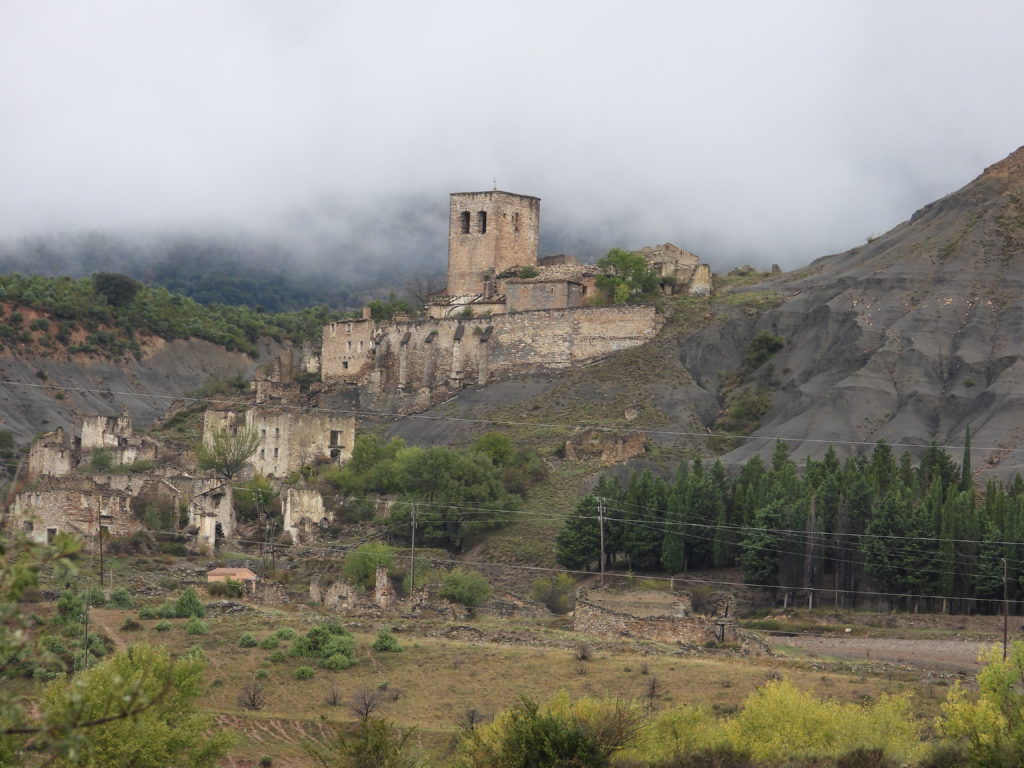
Spain’s reservoirs have drowned many villages, but this one is different. Rather than submerging the village, the Yesa Reservoir took its fertile lands along the river in 1959, leading most residents to take government payments and move elsewhere. One family remains and is still fighting to revive the community.
Shortly after I resume driving, the road passes a number of hills that look like unconsolidated gravel but that seems improbable. I’m running a little behind schedule to reach my next host, so I don’t get out to investigate up close.
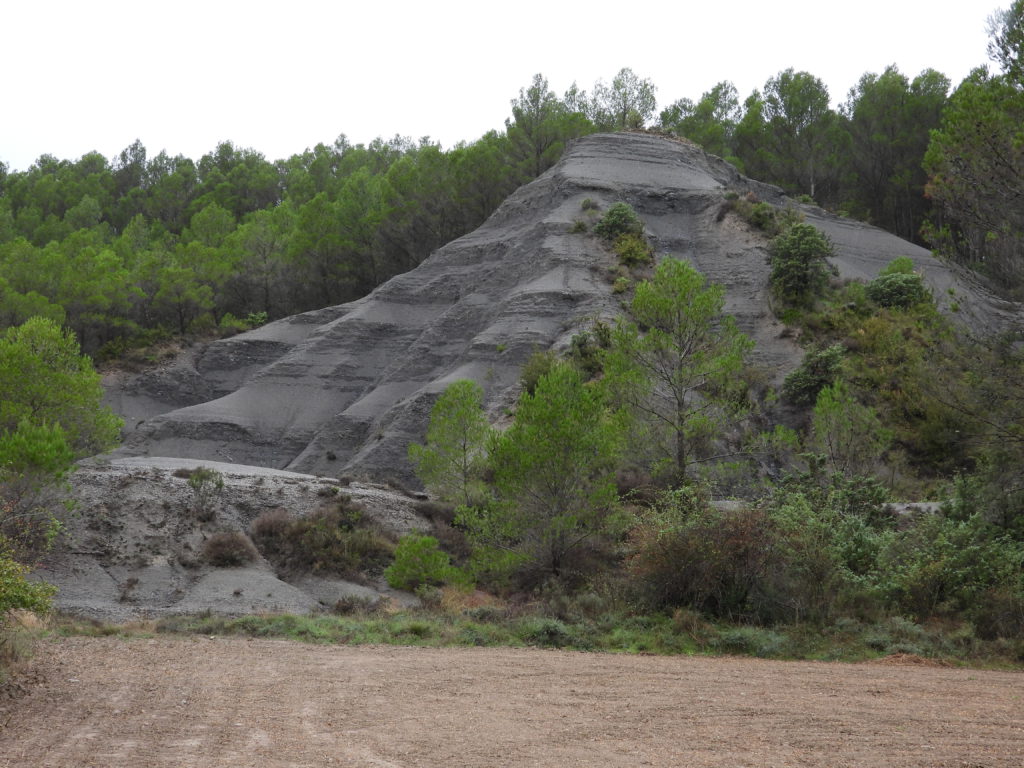
The highway is heading toward Pamplona, famous for the running of the bulls and as Ernest Hemingway’s hangout. Susan and I explored it last March, so this time I’m bypassing it on the motorway in the interests of arriving at my host in the time frame I promised. He lives in Irún, a small city on the French border, which at that point is the Bidasoa River. On arrival, he comes down to help me get the Berlingo parked and we go up to his 4th floor apartment.
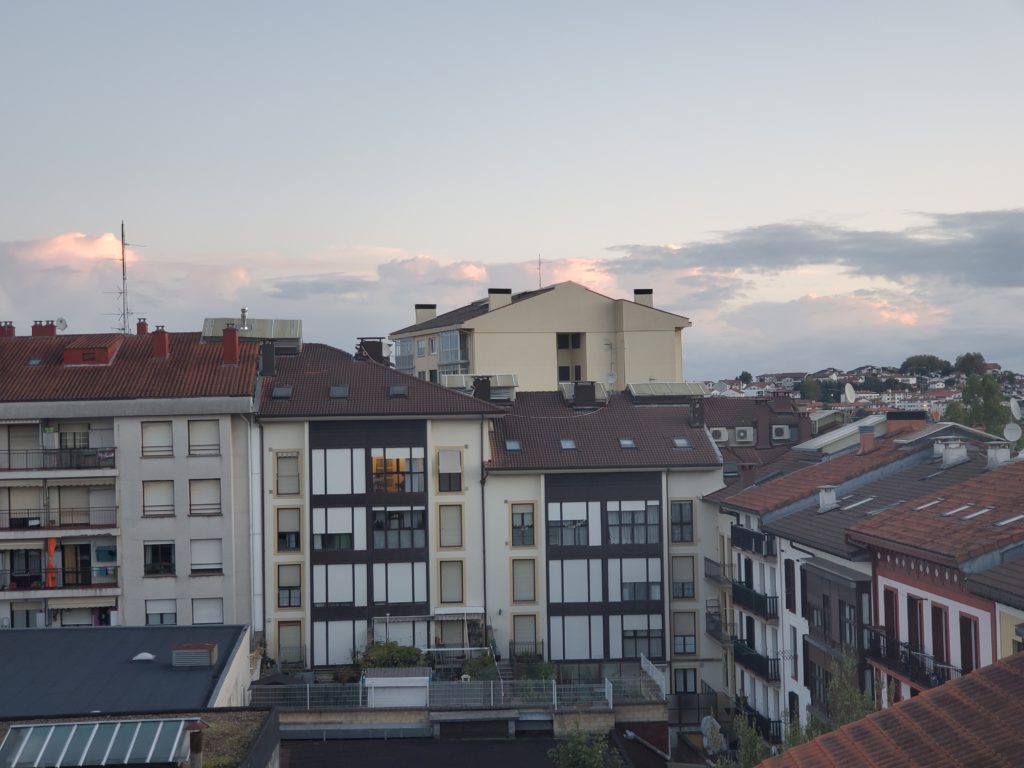
Carlos worked as a teacher in France, where he was born to and raised by Spanish parents – still another example of coerced dislocation during Franco’s long, dictatorial reign. He moved to Spain on retirement because he likes the lifestyle there better. Unusually, he cooks nothing at home. All his meals are eaten out. The only other people I know who opt for that are some Manhattanites, whose refrigerators contain nothing but beer, wine, ketchup packets, and takeout food containers with leftovers. He chooses to live alone, eschewing a live-in companion so as to have his environment to his taste – no compromises.
Later at night, we go out walking in Irún. After showing me around the center, we end up at a bar. Bars in Spain aren’t typically the hard liquor meccas that we think of in the US, but the primary social gathering spots. They serve mostly beer, wine, and tapas (small, almost bite size, portions of food). Midday, the main dining time for Spaniards, many serve full meals. In many urban neighborhoods there may be a dozen bars in a couple of blocks, all with outdoor seating and all well-patronized from about 8 PM onward. They hum with conversation and background music. It’s very congenial.
We get red wine and a croquet tapa and sit down at a table with a female acquaintance of Carlos’s, another teacher. The conversation turns to politics and society and I struggle to contribute and follow it all, with both of them helping me by rephrasing things whenever I get lost. A couple of hours later we continue our walk through the quiet town back to the apartment.
Saturday morning we have cold cereal and fruit for breakfast. Last night, as we were talking and getting acquainted, I made my typical offer of sourdough pancakes for the morning but Carlos demurred.
Irún is in Basque country. The Basques are a very old ethnic group with a language and culture different from the rest of Spain and France. Cognates for “Basque” in other languages are “vasco” (explorer Vasco da Gama) and “Biscay” (the Bay of Biscay). The Basques are at heart traders, seafarers, and cattle farmers. Their origin and that of their language is a fascinating and mysterious topic. One long held theory is that they are direct descendants of the paleolithic (stone age) Cro-Magnons, the earliest homo sapien residents of Europe (although homo neanderthalensis preceded them by hundreds of thousands of years). This theory is encouraged by the Basque language being unrelated to any other. It’s the only non-IndoEuropean language on the continent. Multilingual people can’t draw on anything they know to deal with euskera, its Basque name.
Recent genetic studies have cast doubt on the “caveman” origin but it’s undisputed that the Basques have been a distinct and isolated culture around the Bay of Biscay for at least 3,000 – 4,500 years. It’s only in modern times that they’ve genetically mixed with Spaniards and other Europeans.
Traveling in Newfoundland in 2016, Susan and I learned Basque fishermen crossed the Atlantic every summer for large scale cod fishing and whale hunting. These activities date back to at least 1517, only 25 years after Columbus brought the Western Hemisphere to Europe’s attention.
The Basque language has been making a strong comeback since the 1975 end of the Franco dictatorship. He banned and punished speaking and teaching all non-Castilian languages in Spain throughout his 35-year reign, which is why many Basques today are not fluent in euskera, although almost all signage and printed matter in Basque country uses it.
Basques fought for many years for independence from Spain. The ETA group used terrorist tactics including many assassinations and bombings. The issues were settled amicably in 2018 and the ETA disbanded. Nonetheless, some independence graffiti persists.

Carlos has planned a full day of sightseeing. We start out at 11 AM by touring the nearby Saturday open air market. He points out the best stalls for certain items but he isn’t shopping today. Then a leisurely coffee break at an outdoor table of an adjacent bar. Further along, a seated statue of an Irunian artist, Luis Mariano, catches my eye and we both pose with it.
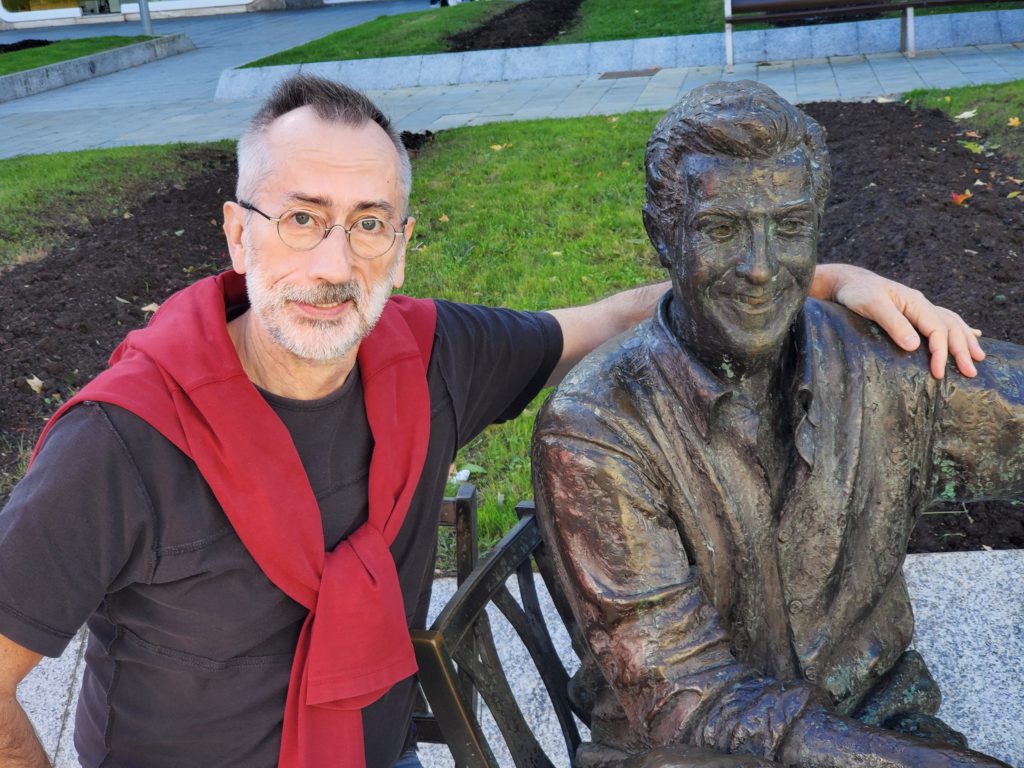
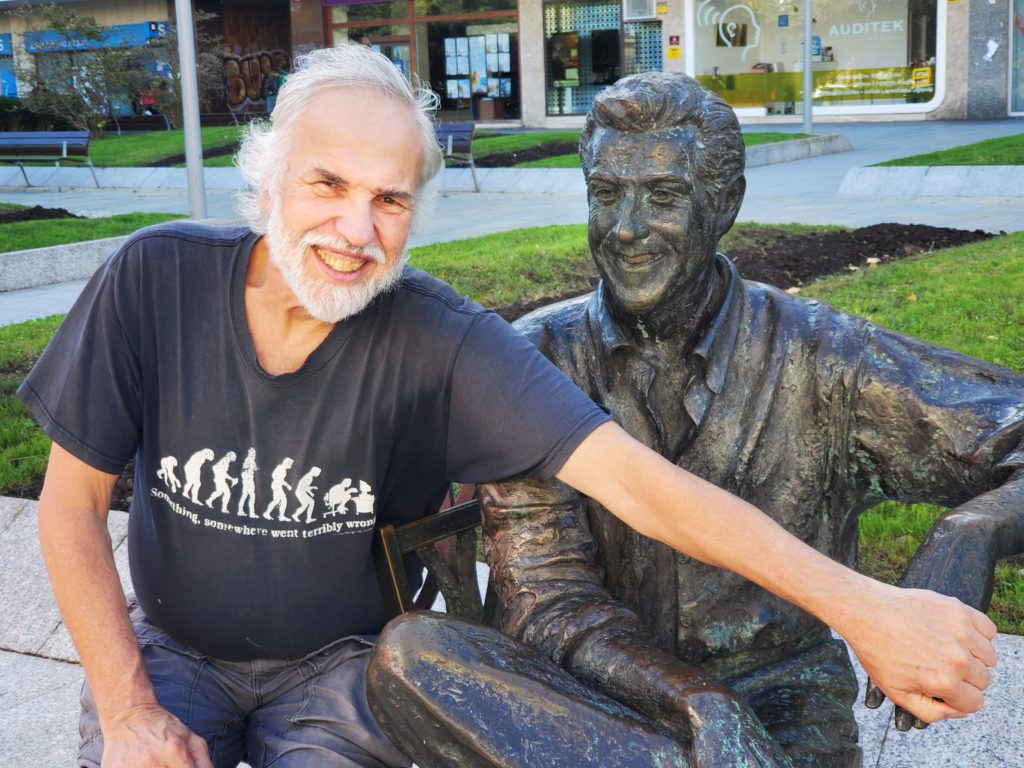
Hanging out with Luis Mariano
After another long walking tour of a different part of town we end up at Restaurante Larun, his regular lunch spot.

Both the bar and restaurant are very crowded and boisterous but Carlos is a regular, so we don’t wait long for a table. Lunch is the main meal in Spain and it’s a leisurely event, often lasting 2 hours or more including the preliminary beer and socializing with people you encounter. The menu del día (lunch specials) look good. They consist of two substantial plates and desert. At this restaurant, water, wine, and bread seem to be included. I have paella, followed by a really tender, large lamb chop with french fries. Dessert is, of course, flan. Excellent food and very reasonable, $14.
Lunch over, we walk to the car and drive to the old waterfront town of Pasai Donibane. The earliest records mention the settlement in 1203 – and it has a lot of interesting architecture. Leaving aside the churches that catered to seafarers, there are many old buildings with well-preserved facades
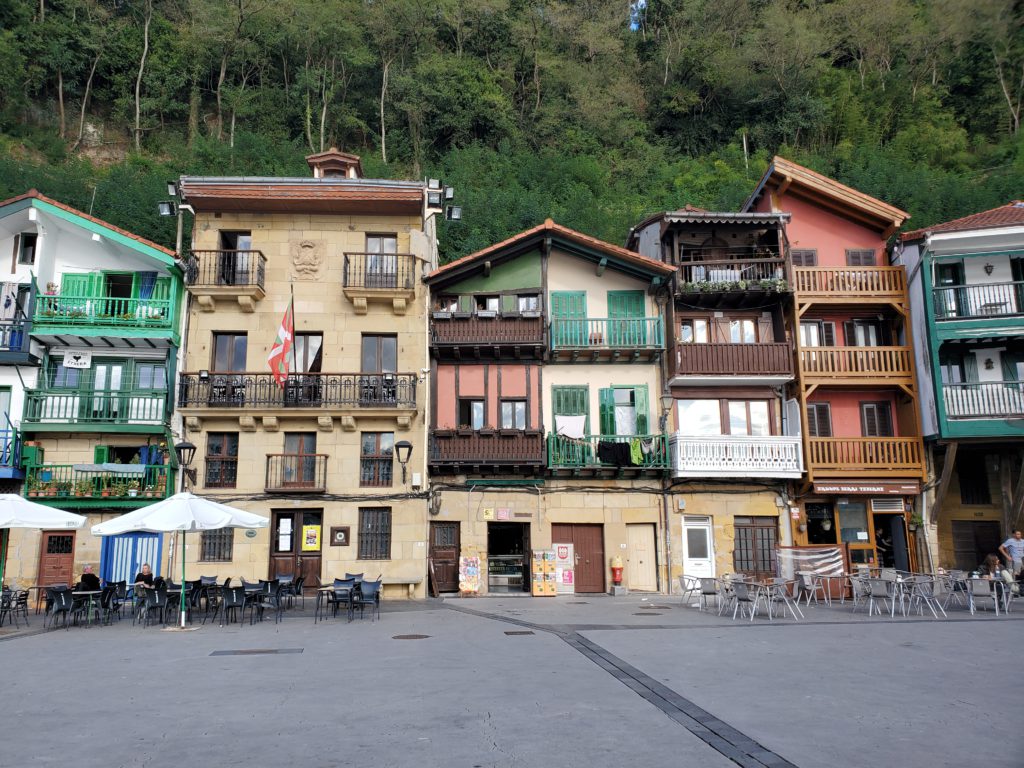
Apparently, in the old days, the taxes on a building were based on its frontage width, not area. As a result some of the buildings are extraordinarily narrow, as little as 10 feet. Victor Hugo lived here for a while and his home was a museum but now tourists have to content themselves with viewing the building from outside.
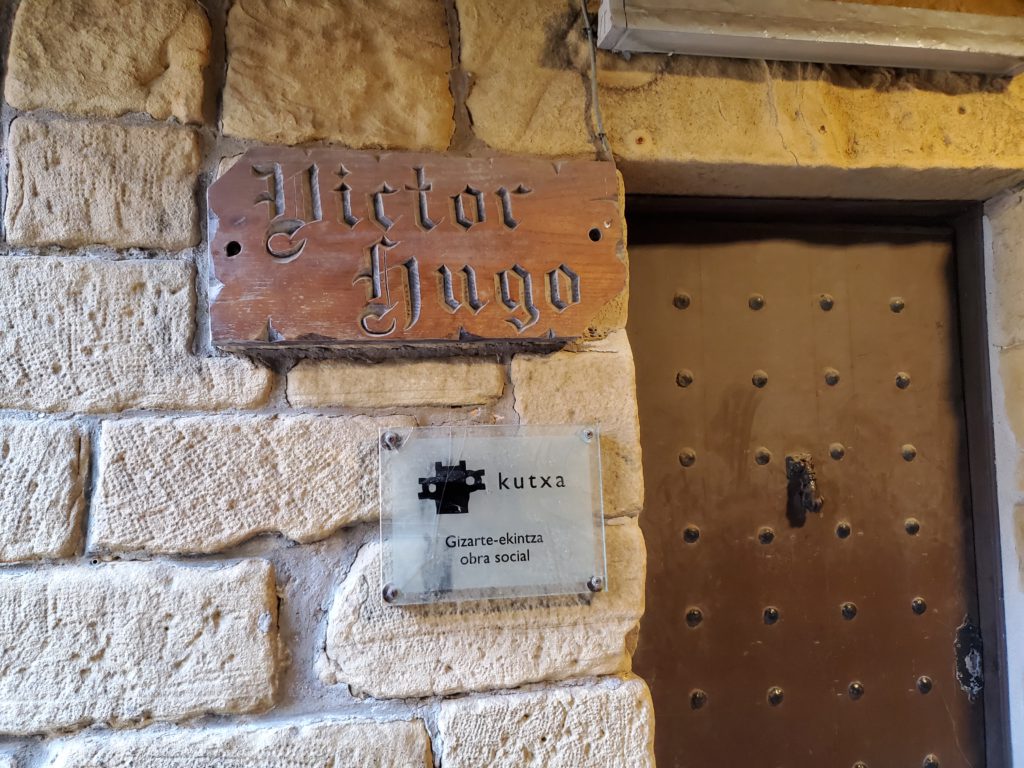
Lafayette also sailed from here – he was eluding both the English and French – to become a general in George Washington’s army. He played a major role in the Revolutionary War or as Carlos put it, “He saved America.”
After exploring the town, Carlos led me along a trail, actually more of a rock scramble alongside the Ria de Pasaia. Pasaia, on the other shore from Pasai Donibane is a major Basque port, exporting, in particular, Spanish automobiles.

The harbor is connected to the Atlantic Ocean by a narrow natural channel. I’ve seen the word “ria” in countless crossword puzzles. It’s defined as a long, narrow inlet from the sea formed by the partial submergence of a river valley. Here, I’ve encountered a named ria in real life for the first time. Silly as it is, I’m nerdishly thrilled.
The trail runs out to the ocean entrance, where we watch various exiting ships make the transition from the quiet ria to the heavy seas.
As well, at the very end is a vertical face and several people are practicing rock climbing. While we’re there, every time someone touches the endpoint, we all applaud.
The rock faces along this side of the ria exhibit large pockmarks caused by wind erosion, a fairly unusual form.
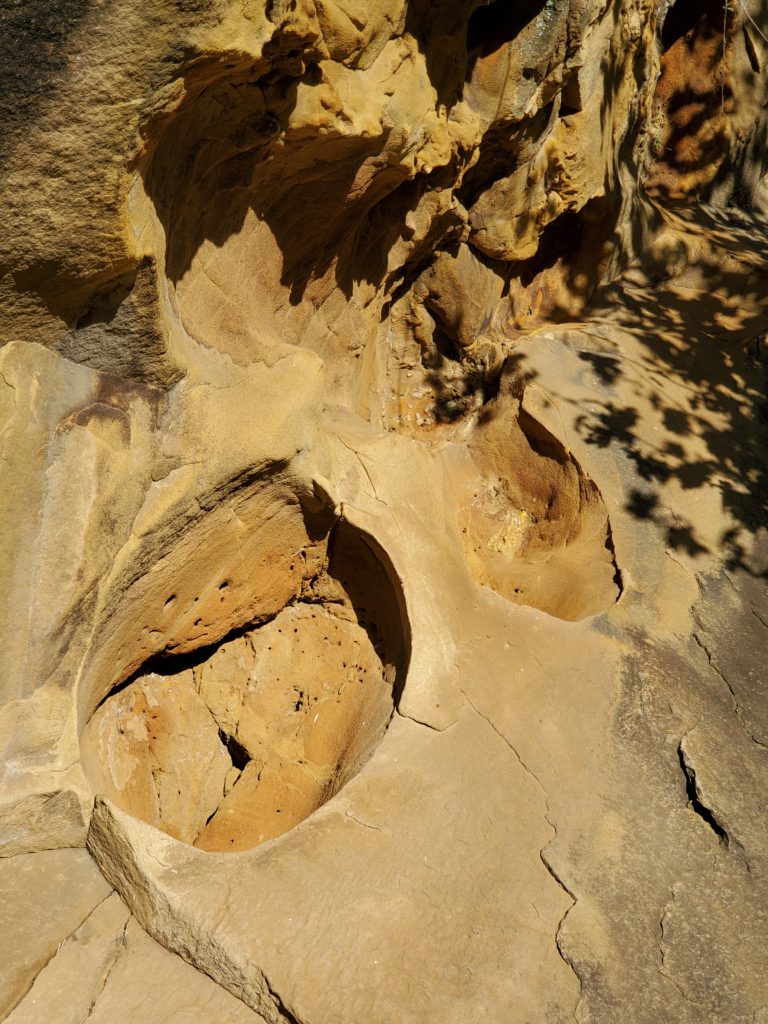
On the long walk back to the car, we pass one of many posters I’ve seen in support of the Palestinian cause. These are quite common, perhaps stemming from the long-standing but frustrated separatist desires of many regions of Spain.
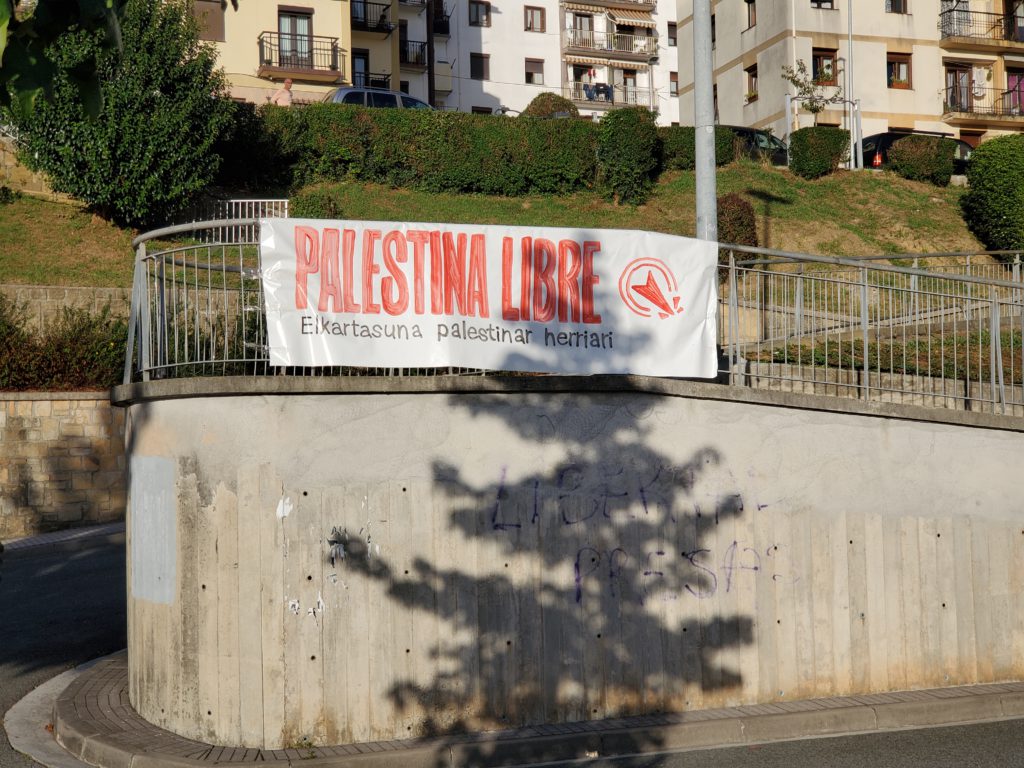
From the people I’ve talked to, there is very little sympathy for Israel in Spain. Many people seem to think the recent Hamas massacre of over 1400 people is a direct result of Israel’s decades long oppression and occupation. I consider Hamas’ attack on civilians as unforgivable, regardless of any incitement, but I also have to say Israel’s moral justification for its policies is very weak. To Spaniards, the solution seems clear – give Palestine back to the descendants of the original residents. One person I spoke with put it in harsh, extreme terms: the US should cede an equivalent area of American desert and all Israelis should relocate there. I still think it’s an intractable problem with no good solutions.
We drive to another waterfront town, Hondarribia. Just across the water is Hendaye, France with a very large small boat harbor near the ocean entrance. The Basque side is picturesque and we take another long walk around, interrupted by the obligatory beer break outdoors in a busy square.Most of the clientele seems to be French. Carlos says they like it here because it’s close and Spain is cheaper than France.
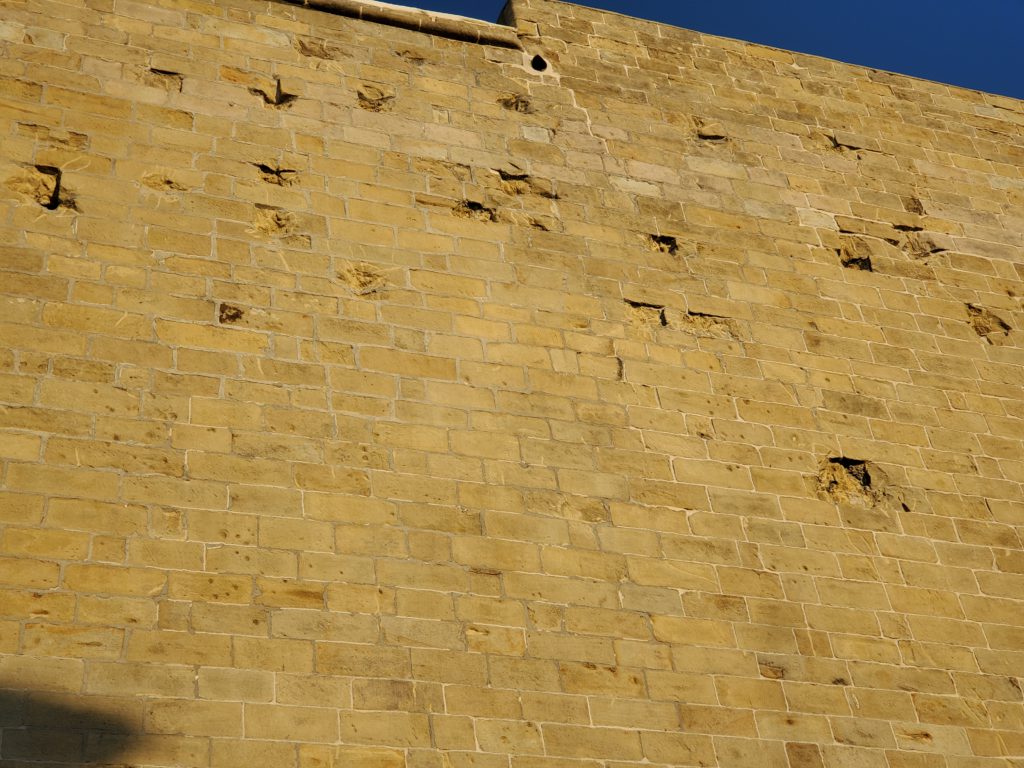

By the time we get back to the car, it’s been dark for quite a while but Carlos’ apartment is only 10 minutes distant. We call it a night.







